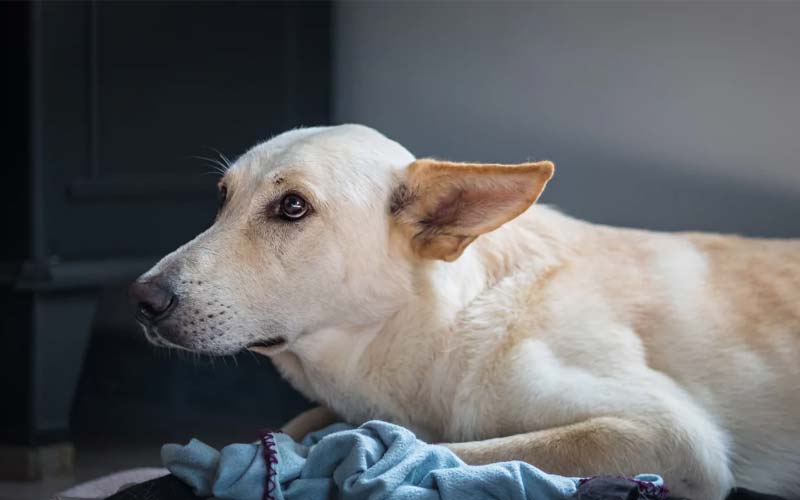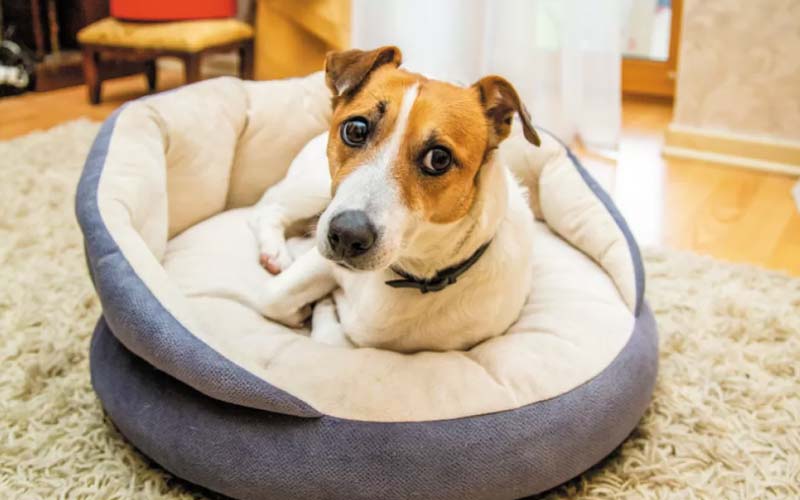If your dog struggles with anxiety, you’re not alone. Studies reveal that a significant number of dogs experience anxiety triggered by separation, loud noises, or unfamiliar environments. This condition doesn’t just affect their emotional well-being but can also lead to physical symptoms like excessive panting, trembling, and even digestive issues.

The good news? With the right techniques and tools, you can help your dog feel calmer and more secure. From creating a safe space at home to incorporating calming aids and behavioral training, there are plenty of practical strategies to ease their stress. Addressing your dog’s anxiety not only enhances their quality of life but also strengthens the bond between you and your furry companion.
In this article, we’ll explore effective methods to help anxious dogs relax, from natural remedies to expert interventions, so your pet can thrive in a calmer and happier state. Whether you’re dealing with a nervous puppy or an older dog with specific triggers, these tips are designed to empower you with actionable solutions.
1. Understanding Canine Anxiety
What Causes Anxiety in Dogs?
Anxiety in dogs often arises from various triggers, such as being left alone (separation anxiety), exposure to loud noises like thunderstorms or fireworks, sudden changes in their environment (moving homes, new family members), or past trauma, such as abuse or neglect. These triggers can affect dogs differently, with some showing anxiety in a specific situation (situational anxiety), while others may experience chronic stress without an apparent cause (generalized anxiety).
Signs Your Dog Is Anxious
Dogs express anxiety in numerous ways, both behavioral and physical. Common behavioral signs include pacing, trembling, whining, or excessive barking. Some dogs might also display destructive tendencies, like chewing furniture, digging, or urinating indoors. Physically, anxiety can manifest through excessive panting, drooling, or gastrointestinal upset, such as diarrhea. Recognizing these signs early is crucial for addressing the root cause effectively.
Why Address Anxiety Early?
If left unmanaged, anxiety can lead to serious health and behavioral issues. Chronic stress impacts a dog’s immune system, making them more prone to illnesses. It can also escalate into severe behavioral problems, such as aggression or withdrawal, which are harder to correct over time. Early intervention not only improves your dog’s quality of life but also strengthens your bond with them, creating a healthier, happier relationship.
By understanding the causes, signs, and implications of canine anxiety, you can take the first step toward helping your dog feel safe and secure.

2. Creating a Safe and Soothing Environment
Establishing a Safe Space
Providing your dog with a designated safe space is one of the most effective ways to ease their anxiety. Choose a quiet, low-traffic area in your home where your dog feels secure. Equip the space with their favorite items—soft blankets, a comfortable bed, and toys that they enjoy. For crate-trained dogs, the crate itself can serve as a comforting den-like retreat. Dim lighting and calming background noise, such as soft music or a white-noise machine, can help drown out external stressors.
Minimizing exposure to known triggers is equally important. If your dog reacts to loud noises or visitors, this safe space should be away from windows or areas with heavy activity. Keep the door open to encourage your dog to enter the area on their terms, fostering a sense of autonomy and trust.
Using Calming Aids
Calming aids like pheromone diffusers, sprays, and anxiety wraps can significantly reduce stress. Pheromone products mimic the scent of a nursing mother dog, promoting a sense of safety and relaxation. Anxiety vests, such as Thundershirts, apply gentle pressure to your dog’s body, similar to a comforting hug.
If you explore aromatherapy, use pet-safe essential oils like lavender or chamomile. However, exercise caution—some essential oils (e.g., tea tree) can be toxic to dogs. Always consult a veterinarian before introducing new products.
The Power of Routine
Dogs thrive on predictability, and establishing a consistent routine can help reduce anxiety by removing uncertainty. Set regular times for feeding, walks, and bedtime to create a stable daily rhythm. Include a calming pre-sleep ritual, such as a gentle massage or quiet play, to signal that it’s time to relax.
By creating a safe environment, using calming aids thoughtfully, and sticking to a routine, you can provide your dog with the stability and comfort they need to feel secure and at ease.

3. Behavioral Techniques to Reduce Anxiety
Positive Reinforcement and Training
Positive reinforcement training is an excellent way to help anxious dogs manage their fears. One effective method is desensitization, which involves gradually exposing your dog to anxiety triggers in a controlled and non-threatening way. For example, if your dog is afraid of loud noises, start with low-volume recordings of the sound while offering treats and praise. Over time, as your dog becomes comfortable, slowly increase the volume.
Another strategy is counter-conditioning, which aims to replace fearful responses with positive associations. For instance, if your dog reacts nervously to visitors, reward them with a treat when they remain calm as someone enters the house. Consistency and patience are key to making these techniques successful.
Engaging the Mind and Body
Physical exercise and mental stimulation are essential for reducing a dog’s nervous energy. Regular walks, games of fetch, or agility training help release pent-up stress, leaving your dog calmer and more balanced. Beyond physical activity, incorporate mental challenges like puzzle toys or food-dispensing games to keep their mind occupied. This redirection of nervous energy provides a healthy outlet and can prevent destructive behaviors.
Ignoring Attention-Seeking Behavior
While it may be tempting to comfort your dog when they whine or jump out of anxiety, doing so can reinforce these habits. Instead, ignore attention-seeking behaviors and reward calm, relaxed states. This teaches your dog that calmness—not anxiety—earns positive attention. However, it’s important to ensure your dog’s needs are being met; they should not feel neglected but rather encouraged to develop healthy coping mechanisms.
By combining consistent training, adequate stimulation, and thoughtful attention management, you can help your dog build confidence and manage anxiety more effectively. These techniques not only reduce stress but also strengthen the bond between you and your pet.

4. Professional Help and Advanced Solutions
When to Consult a Veterinarian or Behaviorist
While many anxiety issues in dogs can be managed at home, some cases require expert intervention. If your dog exhibits severe symptoms—such as persistent aggression, self-harming behaviors (e.g., biting or licking themselves raw), or extreme fear that disrupts their quality of life—it’s time to consult a professional. A veterinarian or certified animal behaviorist can assess your dog’s specific needs and recommend tailored solutions.
Professional help often includes behavior modification therapy, where experts work with your dog to change their response to anxiety triggers. Group classes can also be beneficial for socialization-related anxiety, offering controlled exposure to other dogs and environments. These approaches are particularly effective when combined with consistent training at home.
Medications and Natural Remedies
For severe anxiety, veterinarians may recommend anti-anxiety medications, such as selective serotonin reuptake inhibitors (SSRIs) or benzodiazepines, to help manage your dog’s stress levels. These medications are often used as part of a broader treatment plan, providing temporary relief while behavior modification techniques take effect.
Natural remedies can also play a role. CBD oil, chamomile, and melatonin are popular options for reducing anxiety in dogs. CBD oil is believed to promote relaxation without psychoactive effects, while chamomile can have soothing properties. Melatonin, a natural hormone, may be useful for dogs with sleep-related anxiety.
Safety Considerations
It’s crucial to approach medications and natural supplements with caution. Always consult your veterinarian before introducing any new treatment to ensure it is safe and appropriate for your dog’s breed, size, and medical history. Misusing medications or supplements can lead to adverse effects, including toxicity or worsening symptoms.
Professional guidance, whether through training or medical support, ensures your dog receives the care they need. Combined with a supportive home environment, these advanced solutions can help even the most anxious dogs find peace and stability.

Conclusion Great Ways to Help Your Anxious Dog Relax
Helping your anxious dog relax requires a combination of understanding, patience, and effective techniques. By recognizing the signs of anxiety and identifying its triggers, you can begin to create a supportive environment that reduces stress. Establishing a safe space, using calming aids, and sticking to a consistent routine are foundational steps that provide your dog with security.
Incorporating behavioral techniques, such as positive reinforcement and engaging activities, also plays a critical role in reducing anxiety. As you work with your dog, remember that avoiding the reinforcement of anxious behaviors and rewarding calmness is essential. For more challenging cases, seeking professional help from a veterinarian or behaviorist ensures that your dog gets the tailored support they need.
If your dog’s anxiety persists, medications or natural remedies can offer additional relief, but always consult a professional before introducing new treatments. Ultimately, with the right combination of techniques and expert guidance, you can help your dog feel more secure, improving both their well-being and your relationship.
By taking proactive steps today, you’ll be on your way to helping your dog lead a calmer, happier life. Whether you’re addressing mild unease or more severe anxiety, consistency and love are key. Don’t hesitate to reach out to professionals for support, and remember that you’re not alone in your efforts to create a peaceful and stress-free environment for your furry companion.